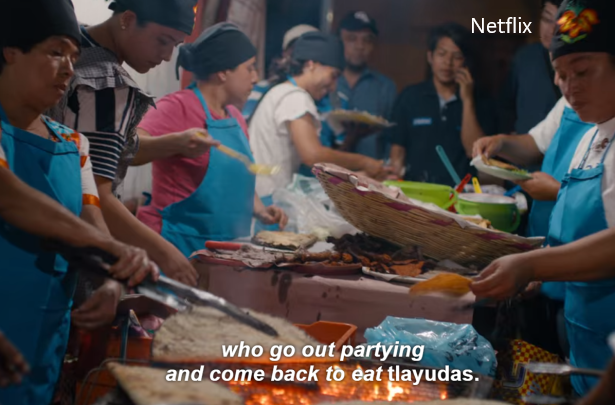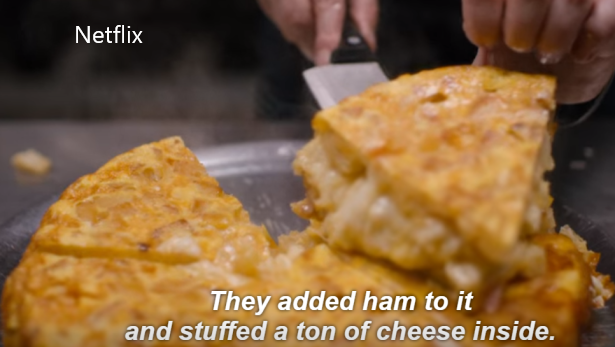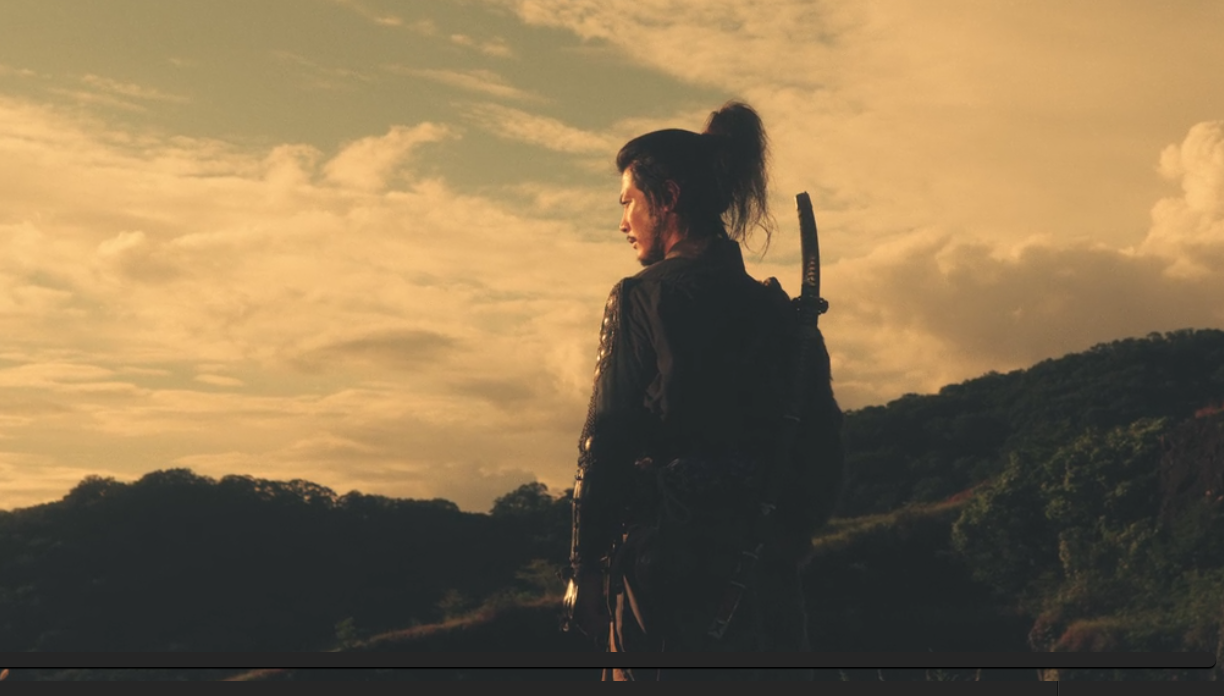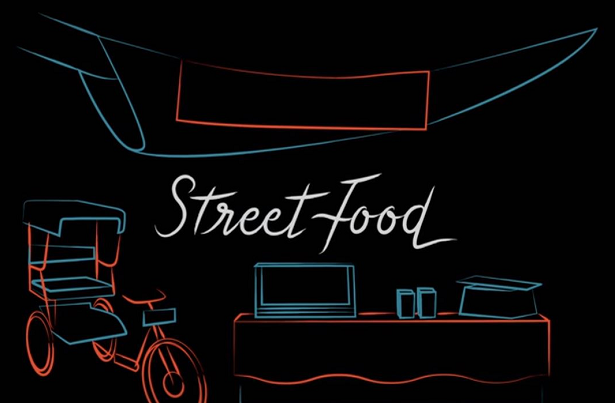Catastrophic Review – Street Food: Latin America

Why hello there, and welcome back to Kitchen Catastrophe, where today, we’re finally reviewing something we WATCHED. We haven’t done that in…what’s that? Two months? Oh, well, BEFORE THAT, it was…also two months? Do I just do these posts on a two-month rotation? And before that it was technically less than a month, if you count Youtube? Man. Apparently I’m just bad at remembering how often I binge food shows. Anyway, we’re talking about Street Food: Latin America, and I think this is going to be a fairly short post, so let’s not continue stalling with extended bits.
Time to Hit the Pavement Again
In case you’ve forgotten, last year we covered “Street Food”, a new Netflix documentary series that, over the course of 9 episodes, covered mostly 6 places in Southeast Asia, and 3 places in East Asia. Since that show came out, it was re-branded as “Street Food: Asia”, because, as I noted in that review, it made sense that they could just keep making seasons of the show going to different places. So for the second season, they went to Latin America.
A hideous place, with no real appeal.
Now, to save you the time of re-reading that first post again: I thought the first season of the series was beautiful, and featured a lot of great food, and also had a worrying thread of what felt kind of like misery porn running through it, as well as some mixed messaging about what it was trying to say in a lot of its episodes: every episode prominently featured someone who had struggled through REAL hardships, who had become a street vendor out of necessity rather than real ‘desire’, and they tended to POUND on the emotional toll those hardships took on them.
I am happy to report that this season has toned that element down considerably, in some ways just by presenting the information differently: while many of the chefs involved in the program DO have dark patches in their history, or elements of tragedy, often the show just…presents that information and moves on, without dwelling on it. One woman mentions how she became a street vendor because her husband died in an accident, and she had to care for her children, and…that’s it. It’s presented as a simple but understandable reason for being there, with the music and cinematography kind of treating it like any other comment made about the food or location: “we brush the tortillas with lard”, “people say we could make tons of money in America”, “I got this job to care for my family after my husband passed away”.
“A lot of drunk people eat our food, which is great, because I need to feed my children.”
A couple of the chefs are given a lot of time to talk about their stories, but with a greater variety of nuance in how ‘tragic’ their background is, with even those who genuinely have overcome a great deal of hardship or tragedy being given the opportunity to also express their joy, or their personality, in a way that makes them feel more rounded than the first season did, in an almost indescribable way.
In general, the show feels like it has learned some lessons from the first season, and in turn is somewhat more…not technically “polished”, but “produced”, which is not always a great: as with so many shows, I have some minor complaints about formatting and presentation. For instance, the first episode, Buenos Aires, Argentina, starts with the chef talking about one of her signature dishes, and her ‘secret weapon’, and they underscore the segment with the sound of a rock concert, drawing a clear parallel of her as a “rock star” of the kitchen, which is fine…but the sound effects are all a little high compared to her voice, so the FIRST impression you get of the series is this kind of jarring technical detail of “wow, they are playing that guitar squeal pretty loud”.
The episodes also have an interesting rhythm to them, where, I swear to you, most of them feel like they finish the episode with a big wrap-up and summation of the thematic through-line…and then have another 2-3 minute scene afterward. Like, they write a damn near perfect ending from a literary or narrative standpoint…and then they KEEP GOING, often to reflect on some small personal detail of the core chef they’ve been following that episode, that gets its own little wrap-up moment, that sometimes “lands”, and sometimes doesn’t. The most jarring version is in the Bogota episode, because I swear to you, the wrap-up segment of that episode felt like the end not just of the episode, but of the SEASON. It was like, a pitch perfect “this is what this show is about, summed up in microcosm”...then there was another scene after it, and then ANOTHER EPISODE. It almost felt like…you know with books, how you don’t like, just end the book once the main conflict is solved? There’s the denouement (pronounced “day-new-mah”), where you get like, an epilogue, or reflections on what the characters learned, etc. This was like someone learned there’s a denouement after the main thing gets done…and just said “extra scene after the finish, got it”.
It’s not that the scenes are BAD: like I said, they tend to add a final return to the human cost/intent of the people involved. They’re just in a weird place, structurally.
Like, this scene is about the chef they’ve been focusing on living with his mother, because “no woman would want me, I reek of fish all the time”, SECONDS after someone declared him “legendary”.
A Couple Bumps in the Road
There’s some other criticisms of the show that it would be mildly irresponsible of me to not point out: Firstly, despite being named “Street Food – Latin America”, the six episode series consists of “5 countries in South America, and Mexico”, which has upset Guatemalans, Hondurans, Costa Ricans, et al, especially since…if you’re going to only have 6 episodes instead of 9, why not do all six in South America, and call it that? Or, if you really want “Latin America” as your name, why not hit up Nicaragua or Panama or something? I’m sure the choices were rooted in some mix of technical details/eye-catching details, (maybe the passports/permits were easier in South America, or Netflix had told them they only were getting six episodes, and when they were compiling the show, they just found these six central chefs’ stories first), which is a reality of these kind of shows you can’t escape: there’s just never time/money to get everything.
The Second complaint that some people have is that, due to the way the episodes are arranged, the show kind of steps into some quasi-controversial shit early on: The first episode, as I mentioned, is set in Buenos Aires, Argentina, and within the first few minutes of the show, a lighter-skinned historian asserts that Argentina is “much more similar to Europe than we are to the other Latin American countries”, and then asserts that “there aren’t many Native people” in the country, statements that were controversial in many regions. For context, Argentina’s native population is estimated to be somewhere between 1.4 and 2.4% of the overall population. By comparison, the US’s native population is less than 1%, last estimated at around 0.8%. Can you imagine how shitty it would be to openly say “oh, there aren’t many Native Americans in the country, they didn’t really influence our culture” in the US? Now extrapolate that to a country with over TWICE AS MANY indigenous people.
At the very least, hire Italians to perform Native sorrow at pollution, like we did!
(Weirdly, Argentina is one of the places that COULD reasonably do that, as we covered on our Food on the Go review: there’s a TON of Italian immigrants in Argentina.)
To me, it’s another weird flub of production, because, honestly, the series does a great job spotlighting chefs of distinct backgrounds and cultures through the countries: a HUGE thrust of one of the episodes is how racism against the indigenous people, specifically their women, forced a chef into working a food stall, because she had no other work she was allowed to do (in fact, she wasn’t even allowed to do the food stall, but she got in a literal fist fight in the street, and ended up being allowed). In Peru, they highlight Peru’s fascinating Nikkei culture (Peru has a lot of Japanese immigrants); in Brazil, they discuss the effects that Brazil’s MASSIVE role in the Atlantic slave trade had on creating a much more African-influenced culture in the Bahía region; In Argentina, we have a discussion of sexism in the culinary world, etc. The show is solidly, if quietly, pro-immigration, understanding, and even includes a small note on how climate change is affecting one of the culinary industries. It just STARTS with an expert dismissing Argentina’s connection to the rest of the continent, and erasing indigenous peoples, which I think I get what they were going for…but it’s a pity they chose to use that phrasing to get there.
See, the dishes highlighted in the first episode are: Stuffed Pizza, a cheese-stuffed take on the Spanish tortilla, Empanadas (fried meat pies), and Choripan, basically Argentina’s version of a Hot Dog. So by pitching the country as “more like Europe”, I think they were setting up Argentina as sort of the first step for less-informed white families in Europe and the US to understand the culture and food choices they were getting into: “don’t worry,” it implies “we’re a lot like you, you can understand this.”
“You get this, right? This all makes sense?”
”Yes, Netflix, as a fat American, I DO understand “ham and a fuck-ton of cheese”.
Overall, I think this season is a little ‘less’ than the first season, both in good and bad ways, and I think the result is perfectly fine, even great! I just think a couple little tweaks would have made it even better: move some episodes around, a little tweak of the sound levels here and there, etc. But of course, the food looks great, and even these limited insights into other cultures are enjoyable.
MONDAY: JON’S WEEK IS GETTING AWAY FROM HIM, SO IT LOOKS LIKE WE’LL BE DOING SOMETHING VAGUELY CHINESE, BUT WE’LL SEE.
THURSDAY: SHRUG. THIS ENDING GOT THROWN OFF BY AN URGENT HOUSEHOLD ISSUE THAT REQUIRED I SPEND A COUPLE HOURS ON THE PHONE, SO I DIDN’T HAVE TIME TO THINK OF ANYTHING.










